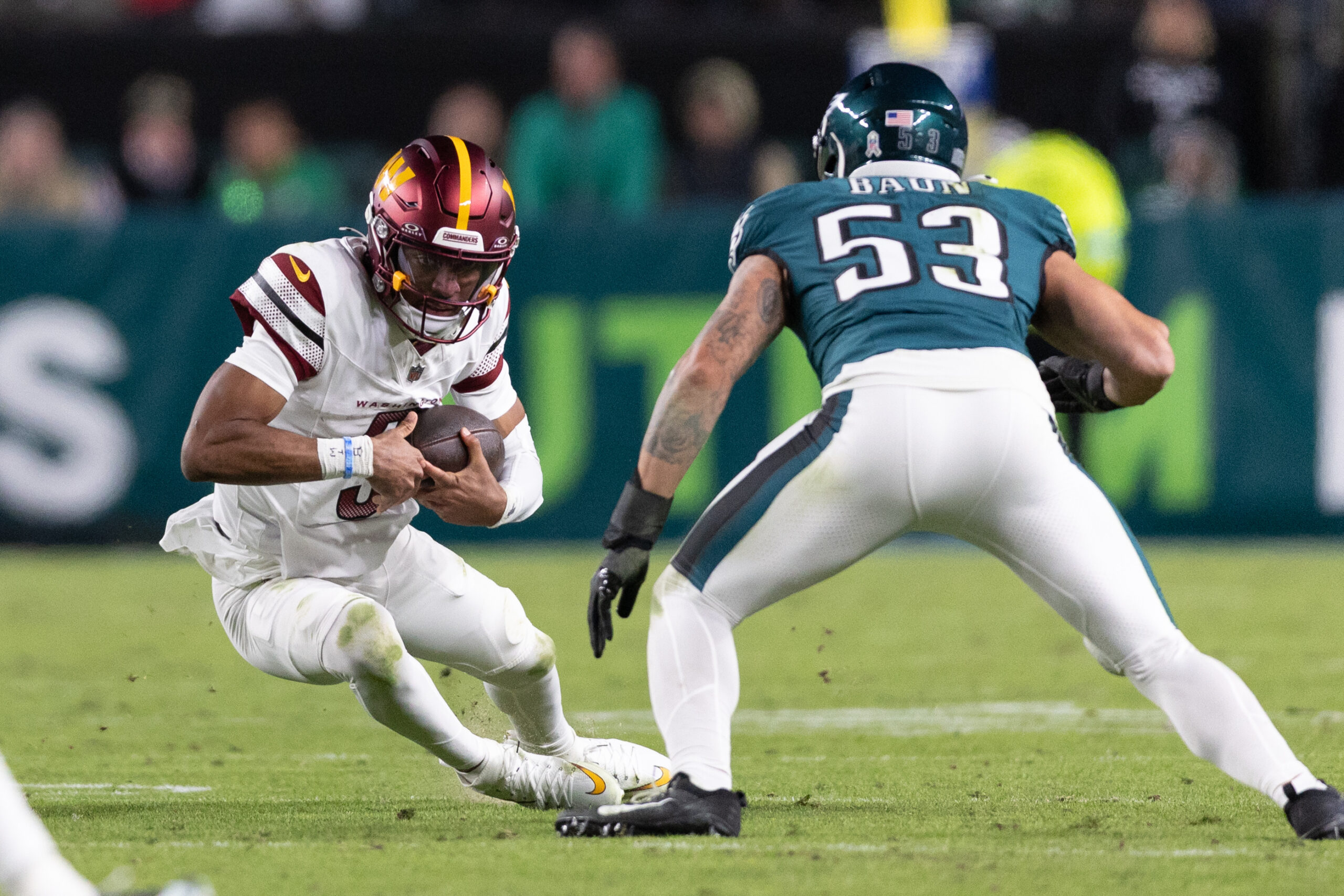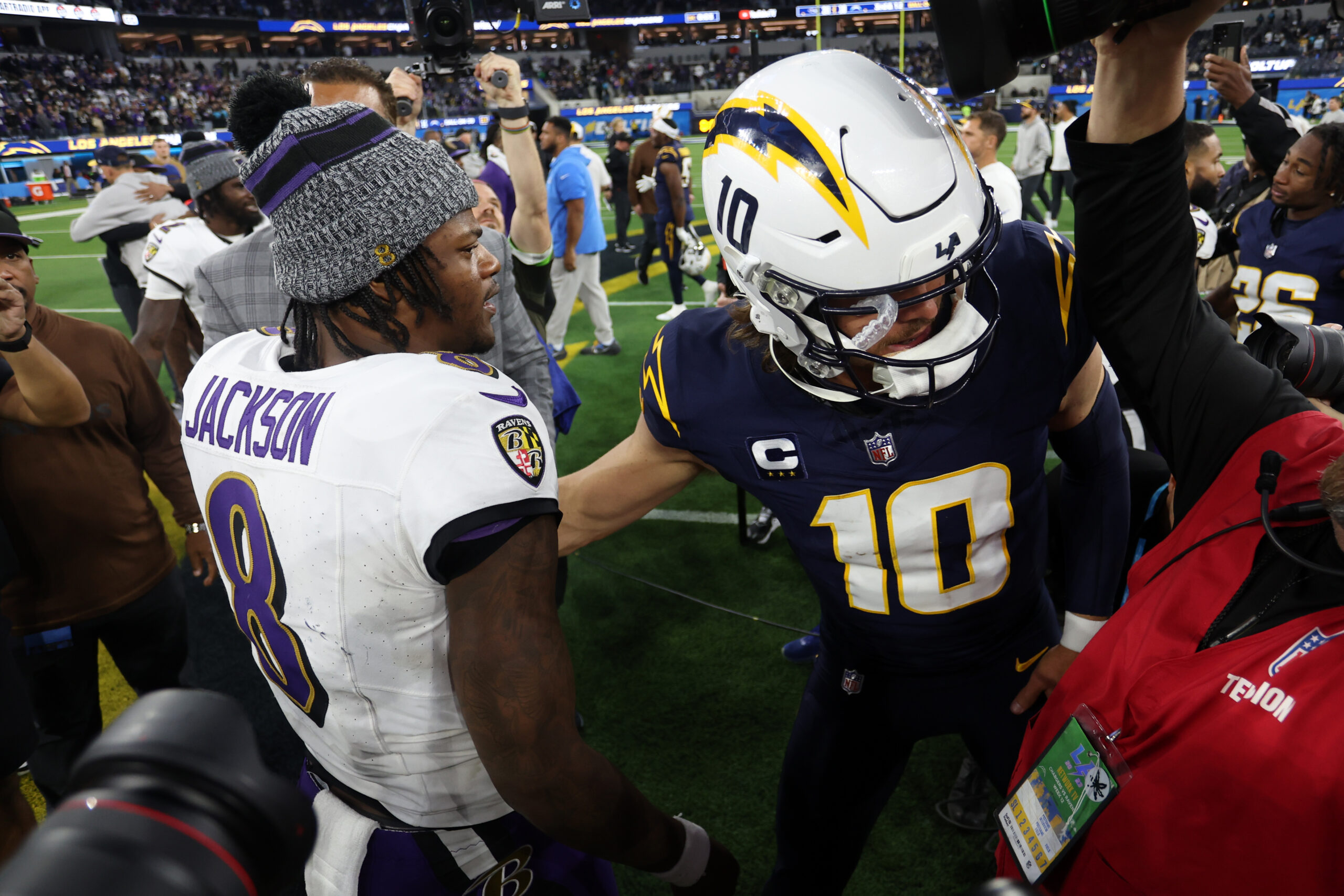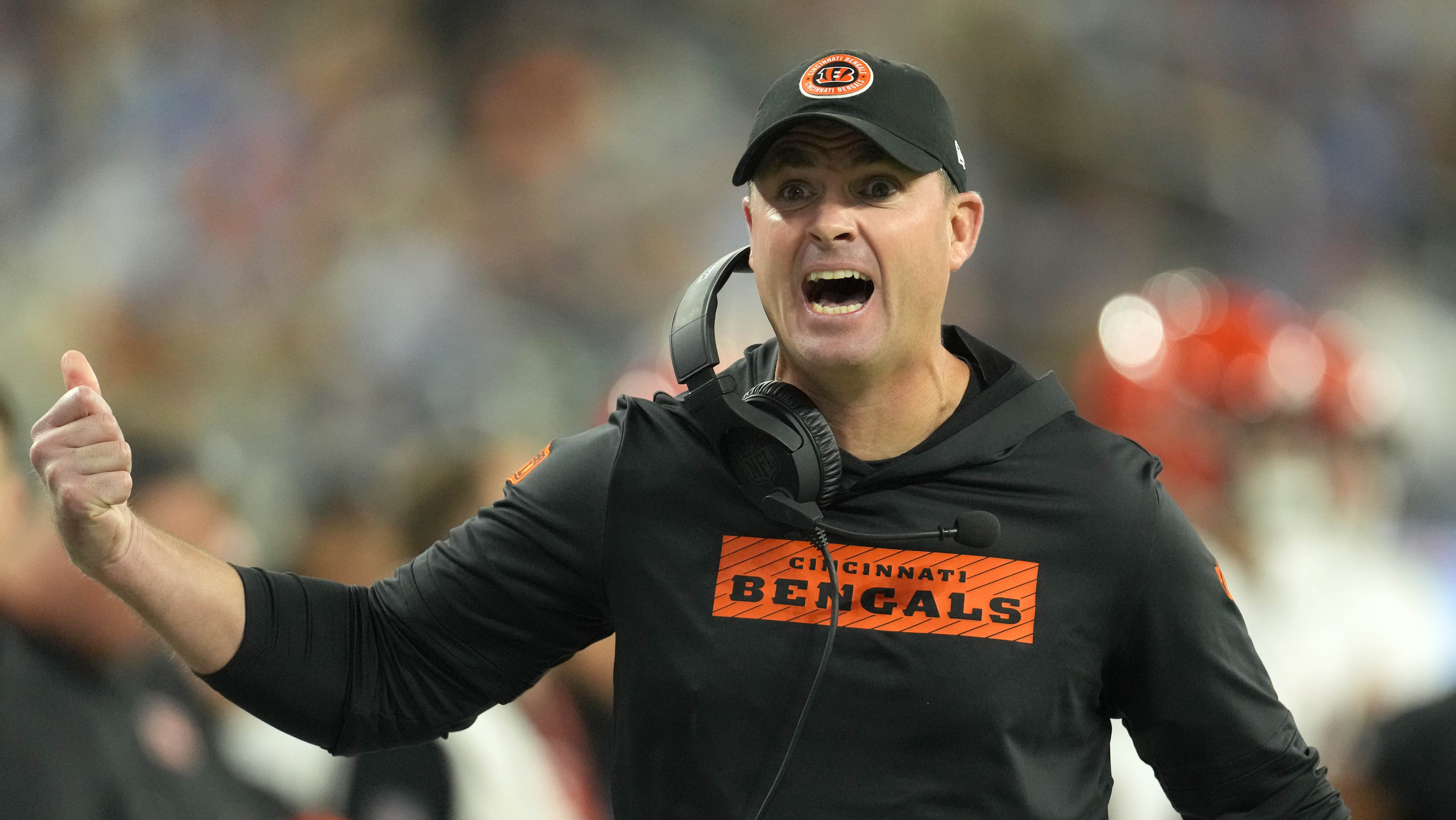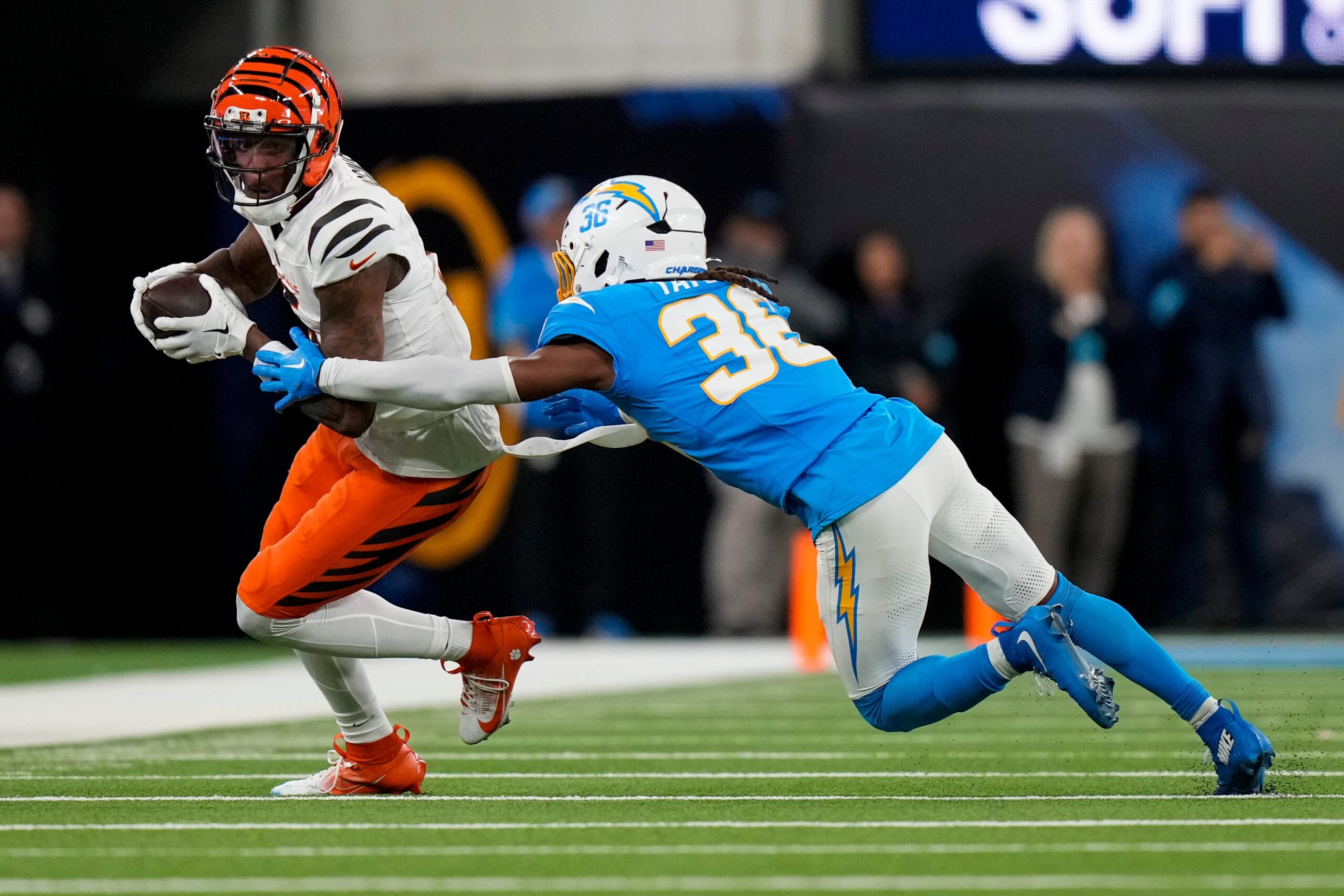NFL Analysis
7/10/24
12 min read
Ranking NFL's Top 10 Greatest Player Comebacks

The deep history of the NFL has been filled with unlikely moments and incredible stories. Legacies have been defined in many ways, from miraculous careers to split-second moments. Every season, one of the most endearing storylines is who will overcome tremendous odds to play at a high level.
The NFL Comeback Player of the Year Award has helped curate a historical trail of some of the best player comebacks in NFL history, but not every return to action is made equal. From defying death to overcoming self-sabotage to retiring and coming back, we've ranked the 10 best individual comebacks throughout the league's 57 seasons since the 1966 merger.
10 Best Player Comebacks in NFL History
What constitutes an amazing comeback is subjective for each person. We prioritized players who returned to or exceeded their previous level of play after a major tragedy. Life-threatening ailments were considered the most severe setback, and unprecedented timelines boosted the case for several others.

10. Rocky Bleier, Pittsburgh Steelers
Owner of one of the most unique stories in professional sports, Rocky Bleier was the ultimate case of defying odds. A 16th-round pick in 1968, right before Chuck Noll arrived in Pittsburgh, Bleier played just 10 games as a rookie before he was drafted for the Vietnam War. He suffered life-threatening leg injuries from grenade shrapnel and gunfire while serving, earning a 40 percent disability distinction.
Bleier was told he'd never return to the NFL and completely missed the 1969 and 1970 seasons. However, Pittsburgh continued to support Bleier's quest to get back on the field. He saw the field in 32 games from 1971 through 1973. In 1974, Bleier became the team's No. 2 back behind Franco Harris.
The 1976 season brought his personal-best production as he eclipsed the 1,000-yard mark for the only time in his career. In total, Bleier won four Super Bowls and racked up 5,159 yards and 25 touchdowns. He retired in 1980 at 34 years old.
While his peak was never as great as many who played in the league, his personal triumph amidst extreme adversity is remarkable. It's unlikely we'll ever see a story too similar to Bleier's, which helps him edge out many qualified candidates for this spot.
9. Randall Cunningham, Minnesota Vikings
After enjoying an 11-year career in Minnesota, Randall Cunningham was burned out following the 1995 season. The 32-year-old called it quits after missing at least nine games in three of the previous five seasons. Then, before the 1997 season, Vikings head coach Dennis Green offered Cunningham a then-record deal of one year, $425,000 to join Cris Carter.
Cunningham played in six games as a backup, leading the Vikings to a comeback win in the Wild Card Round. He came off the bench again in 1998, relieving an injured Brad Johnson. He lit the NFL on fire with Carter and a rookie named Randy Moss.
Imagine him in today’s NFL…
— NFL Legacy (@NFLLegacy) March 27, 2020
Happy 57th birthday to Randall Cunningham! 🚀 pic.twitter.com/IWMnM4Jboi
The 35-year-old finished second in the NFL MVP race while making the All-Pro team. With 3,704 yards, 34 touchdowns, and a league-leading 106 passer rating, Cunningham turned in his best season to date as a passer. He never played especially well after going 13-1 as a starter in 1998 but played three more years to close out a brilliant career.
8. Ed "Too Tall" Jones, Dallas Cowboys
The first overall pick of the 1974 NFL Draft, Ed "Too Tall" Jones was an immediate impact player for the Dallas Cowboys. At 6-foot-9, 271 pounds, Jones racked up 31 sacks in his first five years before retiring to become a professional boxer. The 28-year-old missed the 1979 season, winning six fights, before returning to Dallas in 1980.
His career exploded after getting the urge to fight out. He made three Pro Bowls, two Second-Team All-Pros, and one First-Team All-Pro. Jones finished his career with 106 regular season sacks, 12 more sacks in 20 playoff games, and one Super Bowl ring.
Far beyond just the first player off the bus used to intimidate opponents, Jones set the tone for the Cowboys' defensive identity throughout his career. He was physical, fast, and durable. The fact he was one of the faces of a franchise for 15 years despite preferring boxing to football speaks to how gifted and tenacious he was.
7. John Riggins, Washington Commanders
Hall of Fame rusher John Riggins still ranks in the top 20 all-time in yards despite breaking the 1,000-yard mark five times in his 14-year career. The workhorse back helped define what a fullback could do carrying the ball throughout his career with the New York Jets and Washington Commanders. When he arrived in Washington at 27 years old, he had already earned a Pro Bowl appearance.
The best was yet to come for Riggins. After two low-impact seasons in Washington, he posted back-to-back 1,000-yard rushing seasons in 1978 and 1979. This spike in production led to a contract holdout that caused Riggins to miss the 1980 season.
Fourth and one in the Super Bowl: BEAST MODE ACTIVATED.
— NFL Legacy (@NFLLegacy) February 1, 2019
The @Redskins needed one yard. Instead, John Riggins went for 43 and the game-winning TD. (Super Bowl XVII: Jan. 30, 1983) @riggo44 pic.twitter.com/8dtbqUht5u
He returned to Washington in 1981 when Joe Gibbs took over as head coach. Over the next five years, Riggins redefined his legacy as an All-Pro and Super Bowl MVP. He led the NFL in rushing attempts in 1982 and rushing touchdowns in 1983 and 1984.
The second half of Riggins' career was remarkable. He totaled 62 touchdowns in 64 games. His 24 touchdowns at age 34 were an NFL record for 12 seasons until Emmitt Smith reached 25 in 1995. That's pretty good for someone who spent his holdout season on his farm in Kansas.

6. Tedy Bruschi, New England Patriots
One threat to ending the New England Patriots dynasty throughout the 2000s was the injury bug. Star linebacker Tedy Bruschi only made one Pro Bowl in his career, but the three-time Super Bowl champion was an unquestioned leader of Bill Belichick's defense. His career was almost cut short by four years.
Just days after the Patriots won Super Bowl 39 against the Philadelphia Eagles, where Bruschi had nine tackles and one sack, he suffered a mild stroke due to a congenital heart defect. Bruschi announced he'd miss the subsequent 2005 season shortly after, and his on-field future was doubtful at 31 years old.
However, Bruschi was back on the field midway through the next season. He finished the season with 63 tackles and two sacks in nine games, earning Comeback Player of the Year. His 2006 season was one of his finest at 33, totaling 112 tackles. He finally retired on his terms after the 2008 season.
With 1,063 tackles, 30.5 sacks, 12 interceptions, and 22 playoff games on his resume, Bruschi was named to the franchise's Hall of Fame ring.
5. Eric Berry, Kansas City Chiefs
To this point, there have been some awe-inspiring comebacks, but each member of our top five experienced a different kind of physical setback.
Former Kansas City Chiefs star Eric Berry produced an incredible career that shockingly ended shortly after he turned 30 years old. Looking at what Berry endured over his nine-year career, it's actually more shocking he accomplished so much. Berry played in more than six games in only five of his nine years but is still in consideration for the Hall of Fame.
His peak as an impact safety helped redefine the position. He was a hammer in the box against the run, fluid and fast in man coverage, and an instinctive and rangy zone presence. Berry totaled 445 tackles, 14 interceptions, five defensive touchdowns, 51 pass breakups, and 5.5 sacks.
Happy 32nd birthday to Eric Berry! @Stuntman1429
— NFL Legacy (@NFLLegacy) December 29, 2020
🙌 5x Pro Bowler
🙌 NFL 2010s All-Decade Team
🙌 2015 NFL Comeback Player of the Year pic.twitter.com/aZDmUbbv3l
The tragedies began almost right away for Berry. He missed his second year, 2011, with a torn ACL. He was diagnosed with Hodgkin's lymphoma in December 2014, then returned to play two straight All-Pro seasons in 2015 and 2016 after beating cancer. By the time he turned 29, Berry had racked up five Pro Bowls, three First-Team All-Pro nods, and Comeback Player of the Year.
Unfortunately, a torn Achilles in the 2017 season opener proved a significant setback that even Berry couldn't recover from. He developed a deformed Achilles and played in just three games between 2017 and 2018.
4. Peyton Manning, Indianapolis Colts
Peyton Manning was so good that if you split his 17-year career in half, you'd have a bulletproof Hall of Famer regardless of which half you blindly selected. After 13 years in Indianapolis, a 35-year-old Manning suffered a pinched nerve in his neck, requiring surgery. Shortly after, a herniated disc and more surgeries put his career in jeopardy.
With Manning out, the Colts plummeted in the standings. They drafted Andrew Luck first overall as they believed Manning's playing days were either numbered or over. He missed the 2011 season and was about to turn 36 in 2012.
However, the Denver Broncos were willing to give the legend the chance to show he could still play. Manning immediately rewarded Denver with two incredible seasons and a third efficient and statistically impressive year. Manning made three Pro Bowls, two First-Team All-Pros, won MVP, and a Super Bowl ring in four years with the franchise.
His 2012 and 2013 seasons were especially shocking because of his age and coming off what seemed like a career-ending set of injuries. He led the NFL with a 68.6 completion rate in 2012, leading Denver to a 13-3 record. Manning's 2013 was even better, tossing a league-best 5,477 yards and 55 touchdowns.
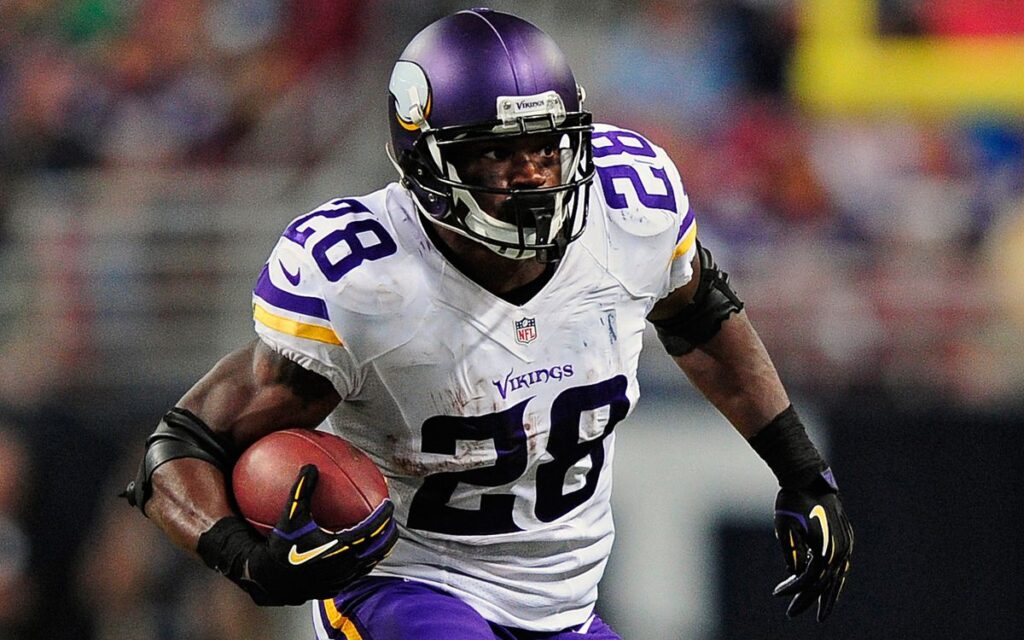
3. Adrian Peterson, Minnesota Vikings
Pointing out that Adrian Peterson bounced back from tearing his ACL and MCL by rushing for 2,097 yards, winning NFL MVP and earning All-Pro honors would already land him on this list. But the context of how quickly came back to the field completely changed expectations for how athletes could recover from what used to be a career-ending injury. In the decade since, Peterson still stands out as an outstanding recovery case study.
Peterson had already established himself as an all-time talent at running back before the injury in his fifth season. He was on pace for his fifth-straight 1,000-yard season with at least 10 rushing scores. However, his knee gave out in Week 13 on Christmas Eve, and most expected him to be out or limited for the following season.
He’s baaaaaaack. @AdrianPeterson pic.twitter.com/tCuJ7uWfw6
— NFL Legacy (@NFLLegacy) November 1, 2021
Instead, Peterson played in all 16 games and produced a career-best year on a team that ranked 31st in passing. As was the case throughout Peterson's tenure in Minnesota, he rarely had a competent quarterback to augment his efforts. Everyone knew Peterson was the unit's engine, and he still raced for 11,747 yards and 97 touchdowns across 10 seasons with the franchise.
He later tore his meniscus in 2014, missing 15 games at 29 years old. He bounced back once again, leading the NFL with 327 carries, 1,485 yards, and 11 touchdowns at 30. It was the second-to-last 1,000-yard rushing season he had, but earning another All-Pro spot at that point in his career defied all norms for the position.
2. Alex Smith, Washington Commanders
Leg injuries are almost always gruesome, but the fractured tibia and fibula that Alex Smith endured forced doctors to put his leg back together. It was terrible in the moment and then got worse. Smith developed an infection that led to sepsis, putting his life in danger.
After his infection was treated, plastic surgeons used muscle, fascia, fat, and skin from Smith's thigh to put his shin back together. Playing football again, especially as he turned 36 in 2020, seemed impossible. But Smith's determination eventually got him back on the field after missing 2019.
Before his injury only 10 games into his career with the Washington Commanders, Smith was the definition of a solid quarterback who would properly manage games. He earned three Pro Bowl nods between his seven seasons with San Francisco and five years in Kansas City. His steady accuracy and reliable decision-making was the ultimate floor-raising combination for three franchises.
Smith played in eight games in 2020 for the Commanders, winning five of his six starts. Just for stepping onto the field again, he was the obvious Comeback Player of the Year winner. 2020 was his final season in the NFL, and it was a massive success, considering he was fighting for his life a year earlier.
1. Damar Hamlin, Buffalo Bills
The only argument for not having Damar Hamlin as the greatest player comeback in NFL history is that he's not a star-level performer. On January 2, 2023, Hamlin suffered cardiac arrest due to commotio cordis, which can occur when a direct hit to the chest over the heart happens at a specific time. Hamlin died on the field and was resuscitated on Monday Night Football against the Cincinnati Bengals.
The fallout from the jarring moment is still felt to this day. The immediate reaction from heroic athletic trainers and medical professionals saved Hamlin's life, and reinforced the importance of practiced plans and proper resources being available. Hamlin became a natural figurehead and spokesperson for CPR training and resource allocation.
Damar Hamlin with a tackle on his first drive back since last year’s incident
— MLFootball (@_MLFootball) November 14, 2023
👏👏👏pic.twitter.com/sVC3c9tAV7
Prior to the cardiac arrest, Hamlin's second year in the league proved to be a massive rise in opportunity and playing time. He had only two tackles as a rookie in 2021 before playing 86 percent of defensive snaps for the Bills in 2022. Hamlin totaled 91 tackles and 1.5 sacks in 15 games.
His career seemed all but over, but Hamlin once again made the Bills' active roster in 2023. He played in five games last season and made two tackles. Though he finished second to Joe Flacco in the Comeback Player of the Year race, actually dying on the field and eventually playing again is as phenomenal as comebacks get.


